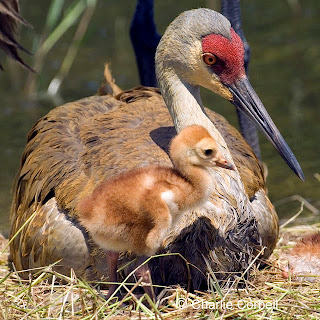It snowed in east Tennessee this afternoon, and its still snowing as I write.
I looked out at the sunflower feeder around 4:00 pm and decided to top it off before it got any colder. No fuss--just a quick trip out the door. Even though I knew it was cold (23 degrees F), I left my feet sock-less in canoe shoes, slipped into a fleece jacket and grabbed the seed. I finished topping off the feeder, added a chunk of suet to the basket, turned toward the door, and came face-to-face with a parade of turkeys coming around the corner of the house.
"Ah, look who's here," I said. They didn't react, just continued on their path. We've met before, but I don't normally speak and I expected that to give them a start. It didn't. And that made everything grand--fluffy, puffed up turkeys hanging around the yard in falling snow.
I stepped back inside to get my camera, and no, I didn't bother to put on coat or socks. I just wanted to catch up with them before they left. I'm laughing as I recall this. I did catch up. I just strolled over closer to the edge of the woods where I knew they would eventually go. Still standing on the patio surface, I took snaps in the dim light, thinking they would, any minute now, disappear down the hill, into the woods. But no, not today. They stopped to forage and even doubled back in my direction!
Okay, so I'm delighted. But I'm starting to not feel my toes and fingers. Its now registering with me that its a lot colder than yesterday, and too cold to be bare footed. Ugh. What a predicament! All's well with the birds but not so well with me. So I leave my guests, go back inside to tug on socks, shoes, a warm jacket and mittens, and come back to try again.
And they still didn't mind my presence. What a treat! I love these guys. They are so expressive, the fluffed up feathers, scratching in the grass, sending snow flurrying up in thick puffs. And they didn't retreat, sulk away, or take flight. Charmed me to my bones. I like to think they like me. But my guess is, they don't think I'm anything to hurry-up about.
After all, I do the same thing every time we meet--open the door, keep my polite distance, and make tiny clicking noises. How scary can that be?
Related links:
Visit my other
wild turkey posts on this blog and see more fun
sketching turkeys at
Vickie's Sketchbook.
Also visit Marsha Davis' article on
Quirky Turkey Facts. Interesting stuff about how the gizzard works and then it gets very weird!
Linked to
Bird Photography Weekly #120 at
Bird Freak.com to promote the conservation of our world's birds.























